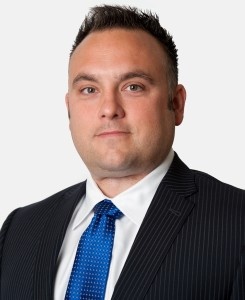Listen to our latest SAS Talk with Kim podcast: Sustainable ROI
“Infrastructure” has been a popular buzzword for politicians recently, with both Hillary Clinton and Donald Trump trying to one-up the other on the campaign trail with promises of infrastructure investments. Now President Trump continues to tease (and tweet) the potential for a massive influx of infrastructure spending.
Even if Washington earmarks a boat load of cash for infrastructure projects, tough decisions will have to be made about where to spend that money. Everyone from big cities to rural counties has a laundry list of projects -- roads, bridges, stormwater systems, airports, public transit -- that need to be fixed or built. And none of these projects are cheap. I heard a good piece on NPR the other morning that ticked through how easy it is to blow $1trillion, which is what Trump has said he wants to spend over the next decade.
So how do local, state and federal officials identify what projects make the cut?
Rather, how *should* they identify which projects to build and which to leave on the drawing board?
 I recently spoke with Stephane Larocque, Chief Operating Officer and Co-Founder of Impact Infrastructure about the importance of factoring in the triple bottom line of “people, planet and profit” and “not just cash flow implications.”
I recently spoke with Stephane Larocque, Chief Operating Officer and Co-Founder of Impact Infrastructure about the importance of factoring in the triple bottom line of “people, planet and profit” and “not just cash flow implications.”
You can listen to our full conversation in my SAS Talk with Kim podcast.
He’s quick to note that we want to see sustainable communities but not at the expense of a thriving economy. Yet he emphasizes that these days there is growing demand for a decision-making approach that brings the “future public benefit” out of the shadows and on equal footing with concerns about the upfront costs.
Impact Infrastructure has two key software products -- Autocase for Buildings and Autocase for Green Infrastructure (local governments can contact them for a free trial) -- that, “in addition to analyzing traditional financial costs and benefits...also monetize the value of other impacts of sustainable design, including reduced energy use, saving water, health benefits, and many others.”
Even something as popular as the US Green Building Council’s LEED certification for building is, as Larocque points out, “after the fact.” The best approach is to identify what you should do in the first place not just how sustainable it is after it’s finished.
 Larocque’s colleagues at Impact Infrastructure have a blog post up, “Suggestion for a Better Infrastructure Report Card,” that makes the case for a new way that the American Society of Civil Engineers, for example, can evaluate infrastructure investments: “ While the case for infrastructure is often made in terms of economic benefits like jobs, GDP growth and international competitiveness, infrastructure’s raison d’être should always be to improve the well-being of citizens. Wise infrastructure investments will make us safer, give us back time, improve our finances, provide opportunity, protect the environment, and help reconnect us to each other.”
Larocque’s colleagues at Impact Infrastructure have a blog post up, “Suggestion for a Better Infrastructure Report Card,” that makes the case for a new way that the American Society of Civil Engineers, for example, can evaluate infrastructure investments: “ While the case for infrastructure is often made in terms of economic benefits like jobs, GDP growth and international competitiveness, infrastructure’s raison d’être should always be to improve the well-being of citizens. Wise infrastructure investments will make us safer, give us back time, improve our finances, provide opportunity, protect the environment, and help reconnect us to each other.”
In that post they describe their approach to “Triple Bottom Line Analysis (TBL)”:
"Triple Bottom Line Analysis (TBL) evaluates a project or policy based on its combined financial, social and environmental impacts. The financial (or profits) impacts are the life-cycle costs associated with the project (e.g., capital expenditures, operations and maintenance, replacement costs, residual value of assets). The social (or people) impacts are the effects of a project on the broader community, quality of life or society. Finally, the environmental (or planet) impacts are the effects of a project on the surrounding environment, habitat or climate. These three values presented together form the TBL valuation.”
If Congress approves even a fraction of $1trillion for additional infrastructure investments, I hope those responsible for allocating the funds bring this type of holistic, reasoned perspective to the table. Communities deserve that Sustainable ROI and to know the full range of impacts -- from smoother roads to cleaner air and faster commutes to flood protection -- from our decisions.
I had the pleasure of working with Impact Infrastructure on the City of San Antonio’s Sustainability Planning project a little over a year ago. We utilized their Autocase for Green Infrastructure tool to assess a proposed street tree project. Here is a snapshot of the results.





